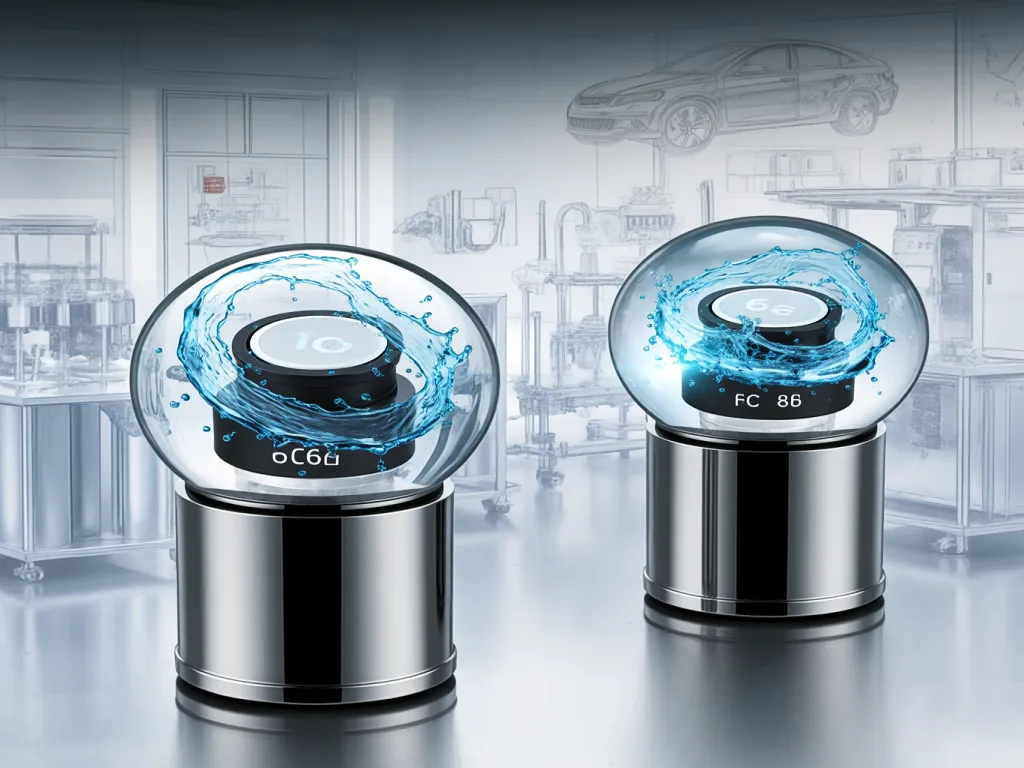Mastering Push Button Switch Symbols in Automotive

Navigating the world of automotive electronics? You’ve likely encountered the ‘push button switch symbol’—a tiny but mighty icon that packs a punch in car design. But what does it really signify in terms of electrical specs, environmental resilience, and longevity? Let’s dive into the nitty-gritty of how this symbol translates to real-world performance in your automotive projects. Ever wondered if you’re picking the right switch for the job?

When it comes to automotive electronics, every component must perform flawlessly under extreme conditions. Among these, push button switches play a pivotal role in controlling everything from engine starts to infotainment systems. But how do these humble switches hold up against the rigorous electrical demands of modern vehicles? Let’s unpack the key parameters and see how the right push button switch symbol ensures rock-solid reliability.
Automotive systems typically operate within specific voltage ranges. Most passenger vehicles use a 12V DC electrical system, though heavy-duty trucks and some hybrid systems may use 24V DC. Within this framework, push button switches must handle voltage fluctuations caused by engine starts, battery charging, and accessory loads. A quality automotive push button switch symbol is designed to operate reliably between 9V and 16V DC for 12V systems, with some premium models extending this range to 6V-30V DC for enhanced compatibility.
Current handling is equally critical. Automotive push buttons often control circuits carrying 5A to 20A of current, though some high-power applications like starter motors may require switches rated for 30A or more. The push button switch symbol you choose should clearly indicate its current rating, with many automotive-grade options offering dual ratings: a lower ‘continuous’ rating and a higher ‘intermittent’ rating for short-duration pulses.
But why does this matter for your automotive project? Imagine a switch that’s barely handling its rated current – under heavy loads or high temperatures, it might fail prematurely. That’s why automotive-grade push button switches typically feature:
- Silver-plated contacts for superior conductivity
- Double-break contact designs to minimize arcing
- Robust terminal connections that resist vibration
Temperature extremes present another challenge. Automotive environments expose components to -40°C in winter and +85°C under the hood in summer. The push button switch symbol must represent components built with materials that won’t warp, melt, or become brittle in these conditions. Look for switches with:
- High-temperature thermoplastic housings
- Silicon-based lubricants that remain stable across temperatures
- Contact materials that maintain consistent resistance
Now, you might be wondering: ‘How do I verify these claims when selecting a push button switch?’ The answer lies in understanding the testing standards. Automotive-grade components undergo rigorous testing including:
- Thermal cycling between -40°C and +125°C
- Salt spray resistance per ASTM B117
- Mechanical endurance testing to 100,000+ cycles
When reviewing push button switch symbols and specifications, pay close attention to these standards. A switch that merely ‘meets automotive requirements’ is different from one that ‘exceeds automotive requirements’ in key areas like temperature range or cycle life.
Let’s get practical. Suppose you’re designing an off-road vehicle’s control panel. You’ll need push buttons that can:
- Withstand constant vibration from rough terrain
- Operate reliably when covered in mud or dust
- Maintain performance across temperature extremes
- Handle the current spikes from winch or light bar activation
In this scenario, choosing a push button switch symbol that represents components with IP67 or IP68 ratings (which we’ll discuss in the next section) becomes just as important as the electrical ratings. The symbol should clearly indicate both the environmental protection and electrical specifications.
One common pitfall is assuming ‘all automotive switches are created equal.’ Nothing could be further from the truth. A switch designed for interior cabin controls might use different materials than one engineered for under-hood applications. The push button switch symbol should accurately reflect these design differences through its labeling and specification details.
So how do you ensure your selection will perform reliably? Start by:
- Defining your application’s exact voltage and current requirements
- Identifying the temperature extremes the switch will experience
- Determining the mechanical stresses (vibration, shock) it must withstand
- Calculating the required electrical life based on operation frequency
With this information, you can evaluate push button switch symbols with confidence. Look for those that clearly display:
- Voltage range (e.g., 6-30V DC)
- Current rating (e.g., 10A continuous, 20A intermittent)
- Temperature specification (e.g., -40°C to +85°C)
- Compliance with automotive standards (e.g., SAE, ISO)
Remember, the push button switch symbol isn’t just a graphic – it’s a promise of performance. When you understand what these symbols represent in terms of electrical parameters, you’re better equipped to make selections that will keep your automotive systems running smoothly mile after mile.
Voltage Requirements in Automotive Systems
The automotive electrical system’s voltage directly impacts push button switch selection. While most vehicles use 12V DC, the actual operating voltage can vary significantly. During engine cranking, voltage may dip as low as 9V DC, while alternator charging can push it above 14V DC. Premium push button switches feature wide voltage tolerances, often from 6V to 30V DC, to accommodate these fluctuations and different vehicle platforms.
Current Handling Capabilities
Automotive push buttons must manage substantial current loads. Typical interior controls handle 5-10A, while power accessories like seat heaters may require 15-20A. The push button switch symbol should clearly indicate both continuous and intermittent current ratings. For example, a switch might be rated 10A continuous but capable of handling 25A for short durations, which is crucial for applications with inrush currents.
Temperature Resilience
Automotive environments expose components to extreme temperatures. Push button switches must operate reliably from -40°C in winter to +85°C under the hood in summer. The symbol representing these switches should correspond to components using high-temperature plastics, stable lubricants, and contact materials that maintain consistent performance across this range without degradation.

Protection Grade Comparison: Exploring the Adaptability of Different Protection Grades (e.g., IP67, IP68) to Automotive Environments and How to Select Push Button Switch Symbols with Sufficient Protection Capabilities
When it comes to automotive applications, the environment can be harsh and unpredictable. From extreme temperatures to dust, moisture, and even occasional splashes of water, the components in your vehicle need to withstand a lot. This is where the protection grade of your push button switch symbol becomes crucial. But what do these grades like IP67 and IP68 really mean, and how do you choose the right one for your automotive needs?
First, let’s demystify the IP code. The ‘IP’ stands for Ingress Protection, and it’s followed by two digits. The first digit indicates the level of protection against solid objects (like dust), while the second digit represents protection against liquids (like water). So, an IP67-rated switch symbol means it’s dust-tight (6) and can withstand immersion in water up to 1 meter for 30 minutes (7). On the other hand, an IP68-rated symbol takes it a step further, offering dust-tight protection (6) and the ability to withstand continuous immersion in water beyond 1 meter, though the exact depth and duration are specified by the manufacturer.
Now, how do these grades translate to automotive environments? Well, if your push button switch symbol is going to be exposed to the elements, say in an outdoor vehicle or in a part of the car that’s prone to splashes, an IP67 rating might suffice. It ensures that no dust gets in and can handle a bit of water without failing. For instance, our IP67 waterproof LED push-button switch is a perfect fit for such scenarios. But if you’re dealing with a component that’s going to be submerged or exposed to heavy rainfall regularly, like in some off-road vehicles or marine applications, then an IP68 rating would be more appropriate. It provides that extra layer of assurance that your switch will keep working, no matter how wet it gets.
But here’s the thing: choosing the right protection grade isn’t just about matching the IP code to your environment. You also need to consider the cost-benefit ratio. Higher protection grades usually come with a higher price tag. So, ask yourself: does my application really need an IP68 rating, or would an IP67 be sufficient and more cost-effective? It’s a balancing act between durability and budget.
Another factor to consider is the switch symbol’s material and construction. Even with a high IP rating, if the materials used aren’t up to par, the switch might still fail over time. Look for switches made from durable, corrosion-resistant materials that can withstand the rigors of the automotive environment. And don’t forget about the seal design. A well-designed seal is crucial for maintaining the IP rating over the long term.
So, how do you go about selecting the right push button switch symbol with sufficient protection capabilities? Start by assessing your automotive environment. Identify the potential hazards your switch will face, be it dust, moisture, or both. Then, match those hazards to the appropriate IP rating. But don’t stop there. Dig deeper into the manufacturer’s specifications. Look for actual test data and case studies that demonstrate the switch’s performance in real-world conditions. And finally, consider your budget. There’s no point in over-specifying if it means breaking the bank. Find the sweet spot where protection, performance, and price all align.
Understanding IP Codes Beyond the Basics
While we’ve touched on the basics of IP codes, there’s more to it than just the numbers. The testing standards for IP ratings are rigorous, and they simulate real-world conditions to ensure that the components can withstand what they’re rated for. For instance, the dust test for an IP6x rating involves exposing the switch to a fine dust cloud for a specified period, ensuring no dust enters the enclosure. Similarly, the water test for an IPx7 or IPx8 rating involves submerging the switch in water under controlled conditions. Understanding these tests can give you a better appreciation for what an IP rating truly means and how it applies to your automotive needs.
Material Matters: Choosing the Right Construction
We briefly mentioned materials earlier, but let’s dive deeper. The construction of your push button switch symbol plays a pivotal role in its durability and protection capabilities. For automotive applications, you’ll want materials that are not only resistant to corrosion but also can withstand temperature fluctuations and mechanical stress. Metals like stainless steel or brass are often used for their strength and durability, while plastics need to be carefully selected for their resistance to UV rays, chemicals, and impact. For example, our KA5 12mm push-button switch utilizes high-quality materials for enhanced durability. The seal design, often made from silicone or rubber, should be flexible yet durable, able to maintain its shape and effectiveness over time.
Case Studies: Real-World Performance
Nothing beats real-world evidence when it comes to assessing the performance of a push button switch symbol. Look for case studies or testimonials from automotive manufacturers or aftermarket suppliers who have used these switches in similar environments to yours. How did they hold up over time? Were there any unexpected failures? Understanding the practical experiences of others can provide invaluable insights into the reliability and durability of a particular switch model or brand.

Durability Considerations: Evaluating Push Button Switch Symbol Performance in Long-Term Automotive Use from Mechanical and Electrical Lifespans
When it comes to automotive applications, durability isn’t just a nice-to-have; it’s an absolute must. After all, your car’s push button switch symbol isn’t just sitting pretty on the dashboard. It’s actively engaged, day in and day out, as you navigate through traffic, adjust settings, or simply start your engine. So, how do you ensure that this tiny but mighty component can withstand the rigors of automotive life? Let’s dive into the nitty-gritty of mechanical and electrical lifespans.First, let’s talk about mechanical lifespan. This refers to the number of operations a push button switch symbol can endure before it starts showing signs of wear and tear. Think of it like the number of times you can open and close a door before the hinges start squeaking. In the automotive world, this could mean thousands, if not millions, of presses over the lifetime of a vehicle. So, when you’re evaluating push button switch symbols, you want to look for ones that boast a high mechanical lifespan. But how high is high enough? Well, it depends on your specific application. For instance, a switch used in a high-frequency setting, like a power window control, will need a higher mechanical lifespan than one used in a less frequently accessed area, like a trunk release.Now, onto electrical lifespan. This is all about how well the switch can handle electrical currents over time without degrading. You see, every time you press that button, it’s not just a mechanical action; it’s an electrical one too. Current flows through the switch, and over time, this can cause wear and tear on the electrical contacts. A switch with a poor electrical lifespan might start to exhibit increased resistance, leading to overheating or even failure. So, when you’re shopping around, make sure to ask about the electrical lifespan ratings. Look for switches that have been tested and proven to handle the electrical loads your automotive application demands.But wait, there’s more to it than just numbers. You also need to consider the environment in which these switches will operate. Automotive interiors can be harsh places, with temperature fluctuations, vibrations, and even exposure to chemicals like cleaning agents. All of these factors can impact the lifespan of your push button switch symbol. That’s why it’s crucial to choose switches that are not only rated for high mechanical and electrical lifespans but are also designed to withstand the specific environmental challenges of your automotive application.So, how do you go about selecting a push button switch symbol with the right lifespan for your needs? Start by understanding your application’s requirements. How often will the switch be used? What electrical loads will it need to handle? What environmental conditions will it be exposed to? Once you have a clear picture of these factors, you can start narrowing down your options. Look for manufacturers who provide detailed specifications on mechanical and electrical lifespans, as well as environmental ratings. Don’t be afraid to ask for test reports or certifications that back up these claims. After all, you’re investing in a component that needs to last the distance.In the end, choosing a push button switch symbol with a strong lifespan is about more than just ticking a box on a spec sheet. It’s about ensuring the reliability and safety of your automotive application. A switch that fails prematurely can lead to inconvenience at best and safety hazards at worst. So, take the time to do your research, ask the right questions, and choose a switch that’s built to last. Your customers, and your peace of mind, will thank you for it.
Mechanical Lifespan: The Unsung Hero of Durability
When we talk about mechanical lifespan, we’re essentially discussing how many times you can press that button before it starts to feel ‘off.’ It’s like the number of times you can fold a piece of paper before it tears. In the automotive context, this number can be staggeringly high. Imagine a switch in a car’s climate control system; it might be pressed hundreds of times a day by different drivers. Over the years, that adds up to millions of presses. So, when you’re evaluating switches, you want to ensure they’re rated for at least that many operations. But don’t just take the manufacturer’s word for it. Look for third-party testing or certifications that verify these claims. For instance, you can refer to industry-standard certifications like those from UL (Underwriters Laboratories) that provide reliable benchmarks. After all, you don’t want to be the one who finds out the hard way that a switch can’t handle the heat (or the presses, in this case).
Electrical Lifespan: The Silent Guardian of Performance
Electrical lifespan might not be as flashy as mechanical lifespan, but it’s just as crucial. This is about how well the switch can conduct electricity over time without degrading. Every press of the button sends a current through the switch’s contacts. Over time, these contacts can wear down, leading to increased resistance and potential overheating. It’s like the electrical equivalent of a road getting potholes from constant traffic. To avoid these issues, look for switches with high electrical lifespan ratings. These switches are designed to handle the electrical loads your application demands, ensuring consistent performance over time. And just like with mechanical lifespan, don’t hesitate to ask for proof. Manufacturers who stand behind their products will be happy to provide test reports or certifications.
Environmental Factors: The Wild Card in Durability
You might think that once you’ve got the mechanical and electrical lifespans figured out, you’re good to go. But there’s another factor that can throw a wrench in the works: the environment. Automotive interiors are subject to a wide range of conditions, from extreme temperatures to vibrations and even exposure to chemicals. All of these can impact the lifespan of your push button switch symbol. For instance, a switch exposed to high temperatures might degrade faster than one kept in a cooler environment. Similarly, vibrations can cause wear and tear on mechanical components over time. So, when you’re selecting a switch, make sure to consider the environmental conditions it will face. Look for switches that are rated for the specific challenges of your automotive application. This might mean choosing a switch with a higher IP rating for dust and water resistance or one with enhanced vibration resistance.
Wrapping up, the ‘push button switch symbol’ is more than just a graphic—it’s a gateway to understanding the performance, protection, and durability you need in automotive electronics. By considering electrical parameters, environmental safeguards, and lifespan, you’re equipped to make informed choices. Ready to elevate your automotive projects? Share this guide with your team or explore our range of automotive-grade switches to find your perfect match. What automotive challenge will you tackle next?

